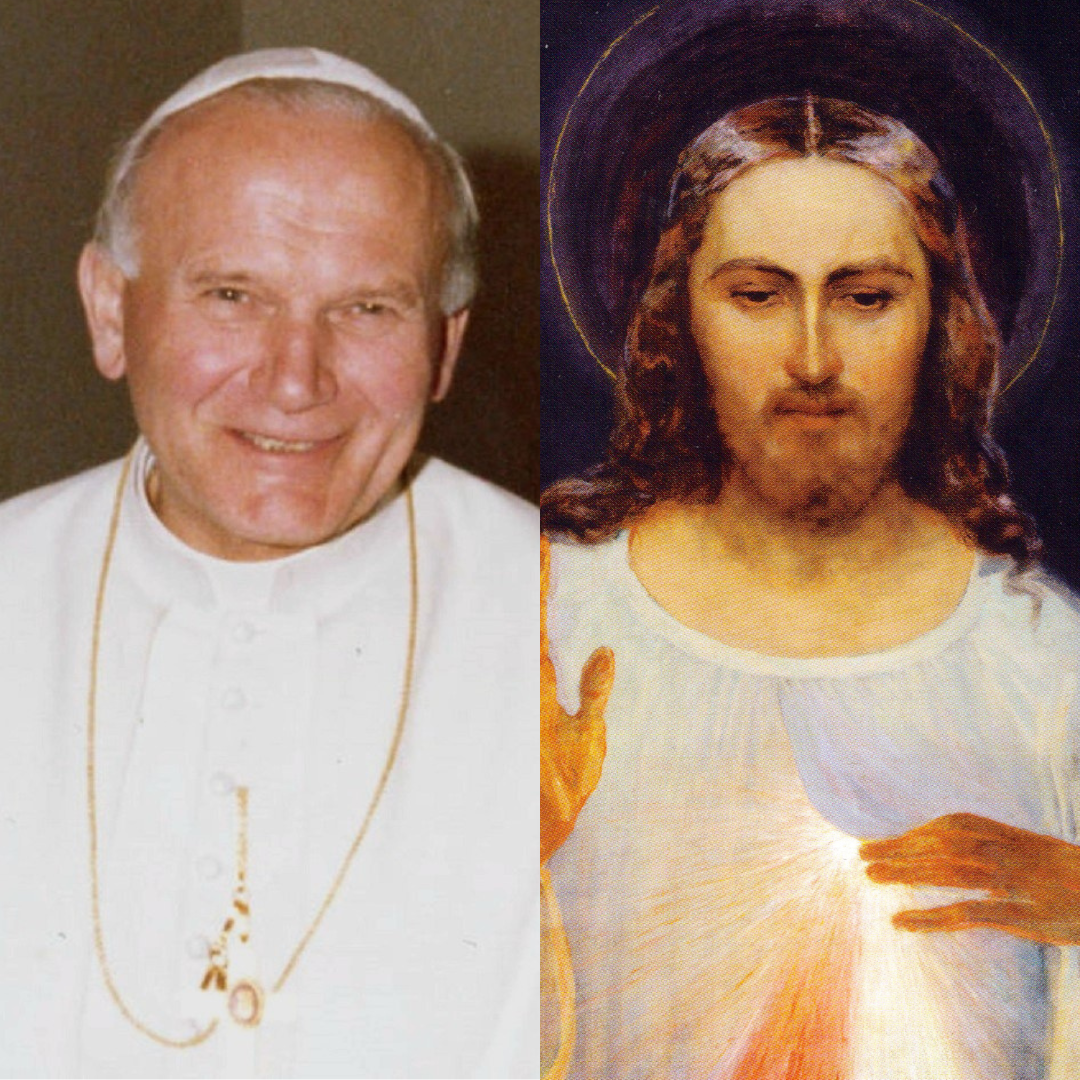You probably already know about the devotion to Divine Mercy in the Catholic Church.
Divine Mercy images can be seen in churches around the world, the Chaplet of Divine Mercy is very popular, and Divine Mercy Sunday is an official feast day of the Church. The founder of the devotion, Saint Faustina Kowalska, is even honored as a saint.
But it wasn’t always this way. In fact, the whole devotion was suppressed for many years and almost lost for good. It only came back due to prayer, perseverance, and the hand of Divine Providence. This is the amazing story.
Worldwide Spread of the Divine Mercy Devotion
The Divine Mercy devotion as we practice it today came from Saint Faustina Kowalska, a Polish nun who lived in the early 20th century. She claimed that she had regular visions of Jesus and saints and that Jesus himself gave her the details of the devotion.
She wrote descriptions of what she saw and heard in her diary, which is now published in her book, "The Diary of Saint Maria Faustina Kowalska: Divine Mercy in My Soul."
Warning her fellow nuns that a great war was coming and that they should pray for Poland, she died at the age of 33 on Oct. 5, 1938.
A year later, Germany invaded Poland. Impressed by the accuracy of her prophecy, Archbishop Jałbrzykowski of Vilnius allowed for public use of the Divine Mercy devotion for the first time.
The devotion quickly spread throughout Poland and was a source of strength and inspiration during the terrible years of the war. By 1941, it spread around the world and, despite the war, had made it to the United States.
Polish priest and Saint Faustina's spiritual director Father Michał Sopoćko was inspired to start a religious congregation related to the devotion.
With the end of the war, the devotion spread even faster. By 1951, just 13 years after Saint Faustina’s death, there were 150 religious centers in Poland dedicated to Divine Mercy.
In 1955, a Polish bishop, with the approval of Pope Pius XII, started a religious congregation dedicated to spreading the devotion. Pope Pius XII blessed a Divine Mercy image in 1956 and allowed many bishops throughout the world to give their blessing to writings about the devotion. Vatican Radio even started promoting the devotion in its programming.
Two Decades of Suppression
Not everyone in the hierarchy approved of the devotion, however. Cardinal Alfredo Ottaviani, the head of the Holy Office (predecessor to the Congregation for the Doctrine of Faith – the Vatican’s theological watchdog department), tried to persuade Pope Pius XII to sign a condemnation of Saint Faustina’s works but was rebuffed.
When Pope John XXIII was elected Pope in 1958, Cardinal Ottaviani had another chance. The Cardinal included her works on a list of books to consider banning soon after the new pope was elected.
On March 6, 1959, the Holy Office finally issued a document forbidding the use of “images and writings that promote devotion to Divine Mercy in the forms proposed by Sister Faustina.”
It seemed like Saint Faustina’s devotion to Divine Mercy might be over with.
A Second Look at the Divine Mercy Devotion
The Polish people were crushed – including many of the clergy. One such person was Karol Wojtyła (now Saint John Paul II), a “rising star” in the church’s hierarchy. He was influential in drafting several key documents of Vatican II and was appointed Archbishop of Kraków at the relatively young age of 43 in 1964.
Within a year of having his new position, and with approval from the Vatican, he started a fresh investigation into her works.
Wojtyła discovered that the previous condemnation of Saint Faustina’s works had been mostly a result of those at the Vatican reading her works not in their original Polish but via faulty French and Italian translations.
Then in April of 1978, after decades of work and prayer by the supporters of the Divine Mercy devotion, the Vatican reversed its previous ban on her works! Catholics around the world rejoiced!
Just a few months later, the now-Cardinal Wojtyła, who had led the effort, was made Pope John Paul II.
Pope John Paul II personally beatified Faustina in 1993 and canonized her in 2000. He also designated the first Sunday after Easter as Divine Mercy Sunday. Saint Faustina and her devotions were completely vindicated and took the message of God’s infinite mercy to the whole world.

